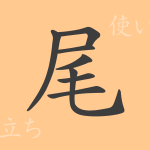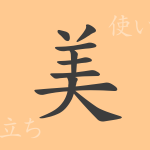“`html
Since ancient times, the “eyebrows” (まゆ, mayu) have enriched human expressions and conveyed subtle emotional changes. Despite being one of the commonly used kanji characters in Japan, opportunities to deeply understand its origin and meaning are surprisingly rare. In this article, we will explore the world of the kanji “眉” (まゆ, mayu), from its formation and meaning to its usage, including idioms and phrases in the Japanese language. We will provide you with a wealth of knowledge about eyebrows.
Origin of 眉 (まゆ, mayu)
The kanji “眉” (まゆ, mayu) can trace its origins back to the oracle bone script of ancient China. Originally, it was used as a pictographic character representing the hair on the upper part of the face. Over time, it evolved into its current, more refined form, becoming established as the character denoting eyebrows, an important part of facial expression.
Meaning and Usage of 眉 (まゆ, mayu)
The kanji “眉” (まゆ, mayu) refers to the hair growing above the eyes, i.e., the eyebrows. However, it is not limited to this literal meaning; it is also used metaphorically to express beauty, facial expressions, and more. For example, “眉をひそめる” (まゆをひそめる, mayu o hisomeru) is used to express emotions such as worry or discomfort.
Reading, Stroke Count, and Radical of 眉 (まゆ, mayu)
The kanji “眉” (まゆ, mayu) is one of the characters particularly familiar in the Japanese language.
- Readings: On’yomi (音読み) readings are “ビ” (び, bi) and “ミ” (み, mi); Kun’yomi (訓読み) reading is “まゆ” (まゆ, mayu)
- Stroke count: 9 strokes in total
- Radical: 目 (めへん, mehen)
Idioms, Phrases, and Proverbs Using 眉 (まゆ, mayu) and Their Meanings
Many idioms, phrases, and proverbs that include the kanji “眉” (まゆ, mayu) carry meanings related to its shape or expressions. For instance, “眉を顰める” (まゆをひそめる, mayu o hisomeru) indicates a worried expression, “眉目秀麗” (びもくしゅうれい, bimoku shūrei) means having a beautiful face, and “眉間にしわを寄せる” (みけんにしわをよせる, miken ni shiwa o yoseru) is used to express anger or troubled feelings.
Summary of 眉 (まゆ, mayu)
The kanji “眉” (まゆ, mayu) is not just a character representing eyebrows but is also used in various expressions to denote human emotions and beauty. Through this character, one can rediscover the depth and richness of the Japanese language. Pay attention to the various idioms and phrases used in daily life, as they reflect the emotions and culture of the people.
“`

























